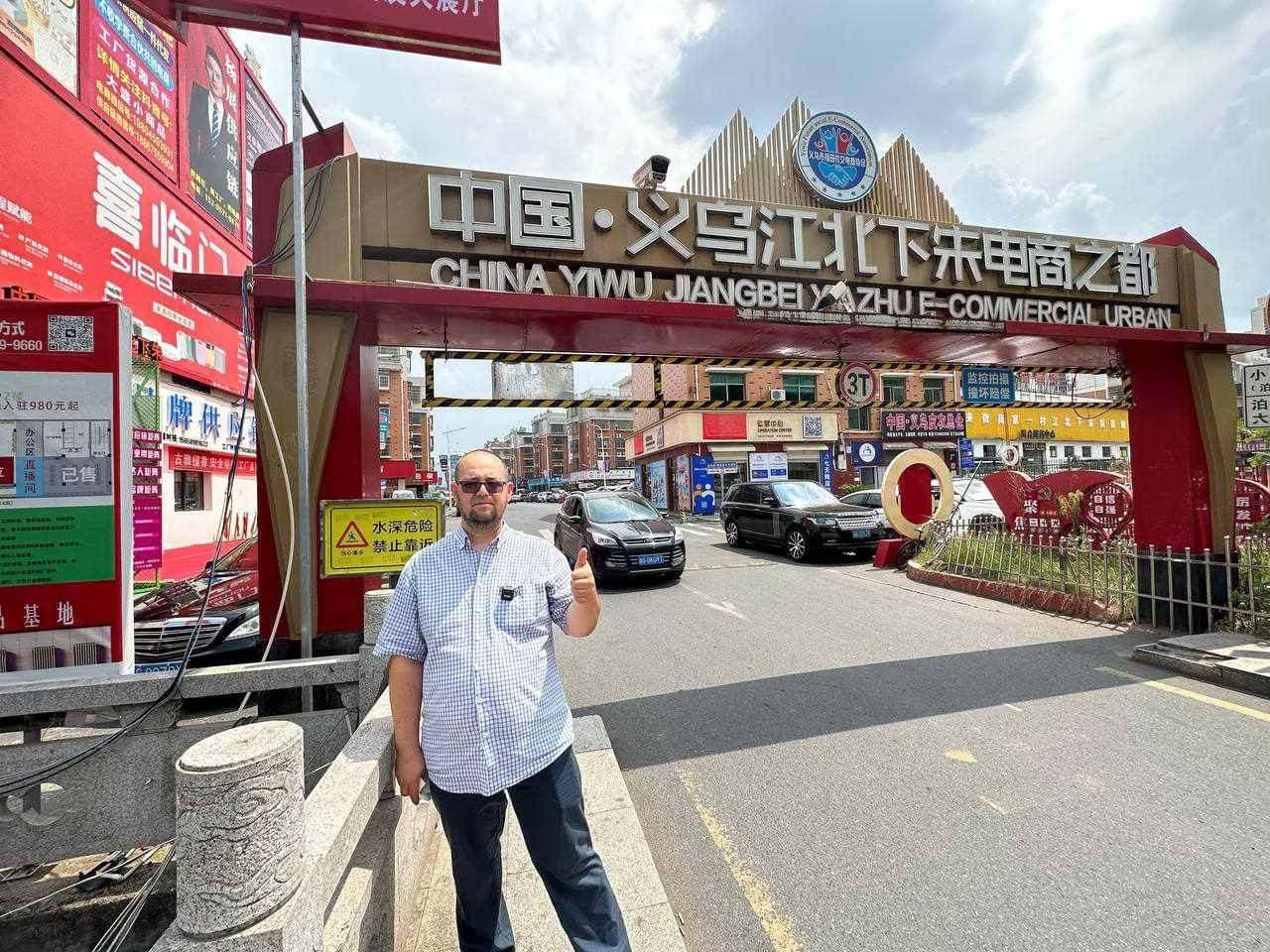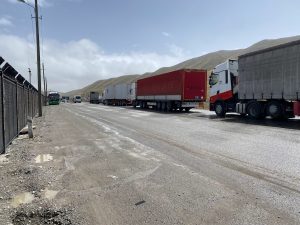China’s Premier Li Qiang is visiting Kyrgyzstan later this month to discuss the China-Kyrgyzstan-Uzbekistan (CKU) railway, a sign that the project, which has been discussed for decades, may finally be realized.
Russia’s invasion of Ukraine and subsequent sanctions on Russia have created an appetite for alternative routes from China to Europe and the Middle East, leading to the 20-year-old railroad project’s renaissance. Now is the time for Central Asia to solidify its role as a transit region for goods between East and West.
The new route will reduce the time it takes to deliver goods to Europe by seven or eight days, creating an opportunity for Central Asia to regain the role of being “central” to continental trade.
However, experts warn that the multibillion-dollar CKU railway project will disproportionately benefit the elite. It may also be used to circumvent sanctions and fuel the growth of gray-zone trade.
The Price of Connectivity
Uzbek entrepreneurs that are engaged in the trade of goods with China report that it can take anywhere from 45 to 70 days to move goods by train from China through Kazakhstan to Uzbekistan. Although the current railway is the cheapest option, it’s not a viable means of transport for perishable or high-value goods.
Railway and air transport costs are also an issue for traders. “In my perspective, one of the foremost issues plaguing the import of Chinese goods into Uzbekistan is the exorbitant cost of transportation,” said Otabek Siddikov, proprietor of a Tashkent-based logistics firm.
If opting for air transport, businesses incur charges ranging from $9 to $25 per kilogram. Transporting via trucks is cheaper, but can still cost up to $130 per cubic meter (or $7 to $14 per kilogram.) On top of transport costs, there is also the additional burden of state duties on goods exported from China to Uzbekistan.
“Unfortunately, we also face the unsettling issue of corruption in the process of importing goods,” Siddikov added, without going into detail.

Otabek Siddikov visits the famed wholesale market of Yiwu, China. Photo courtesy of Otabek Siddikov.
Siddikov is eagerly anticipating the opening of the CKU railway. He believes that it will ease the financial burden on local entrepreneurs. “We think that if the railway from China through Kyrgyzstan is opened, it will be very convenient and cheap for businessmen to bring goods here. At least, we hope so,” Siddikov said.
According to the Ministry of Investment, Industry, and Trade of Uzbekistan, parties have tentatively agreed on a 450-kilometer route running through Kashgar, Torugart, Arpa, Makmal, and Jalalabad. The proposed route will traverse incredibly challenging mountainous terrain, but if successfully built, it is expected to reduce the time taken for delivery of goods to Europe by a week or more.
Transparency Concerns
On June 1, the First Project and Survey Institute of China Railway Construction Corporation provided the Kyrgyz and Uzbek governments with the final version of the technical and economic feasibility study (TEO) for the railway construction project. The final cost of the TEO is unknown, but each state funded at least 30 percent of its cost.
Despite our request to the ministries of transport and trade of Kyrgyzstan and Uzbekistan, we did not receive even a summary of this document. Both the State Enterprise National Company Kyrgyz Temir Zholu and JSC O’zbekiston Temir Yo’llari, the companies responsible for implementing the project, have remained silent about the details of the TEO. This lack of transparency raises questions about the project’s viability and ecological sustainability.
Central Asia, a region prone to earthquakes and characterized by a semi-arid climate, faces periodic natural disasters that pose significant risks. The vulnerability of this area to climate change is among the highest globally. For instance, in 2008 Kyrgyzstan faced an earthquake with a moment magnitude of 6.6, which completely destroyed Nura village.
Another natural disaster risk is linked to the main Central Asian rivers, the Amu Darya and Syr Darya, which may overflow and damage infrastructure, settlements, and agricultural land. Failing to address these risks promptly might result in substantial costs. There is also a concern that the construction of the railroad might lead to the displacement of local communities.
The true extent of the impacts on archaeological sites and peoples’ livelihoods, as well as the potential effects on water sources and waste management, cannot be accurately assessed until the Kyrgyz government releases the feasibility report. Only with access to this report will a comprehensive understanding of these potential consequences be possible.
Who’s Paying for It?
This year, in August, a trilateral meeting should have taken place at which officials from China, Kyrgyzstan, and Uzbekistan would discuss financing of the railway in person. However, there was no press coverage of the meeting, and instead, it was reported that Chinese Premier Li Qiang would be visiting Kyrgyzstan in October. During his visit, the agenda is set to include discussions on the development of the CKU railway project.
The issue of financing remains the most crucial point of discussion, especially for Kyrgyzstan, which will struggle to fund the project on its territory.
Estimates for the total cost of the railway range from $3 billion to $5 billion. This suggests that the construction of the railroad segment passing through Kyrgyzstan will cost between $1.8 billion and $3.1 billion.
Temur Umarov, a researcher at the Carnegie Center for Russian and Eurasian Studies in Berlin, believes that the construction of the railroad is far from a done deal. “There are serious questions about where the funding for this project will come from,” he said. According to Umarov, Kyrgyzstan won’t be able to fund the project alone, so funding from third parties may be the only viable option.
Umarov doesn’t see these funds coming from the West. “Kyrgyzstan is gradually moving in an authoritarian direction,” he said, adding that it would hamper the country’s chances of raising funds from Western institutions. “That leaves China,” Umarov continued, “but the question remains as to whether Bishkek is willing to become even more dependent on China.”
Kyrgyzstan is toeing the line with regard to its debt situation. It has set a cap decreeing that no more than 45 percent of its total foreign debt may be owed to a single creditor. However, the country’s debt to China currently stands at 39 percent of its overall external debt, putting it close to that limit.
Over the next five years, from 2023 to 2028, Kyrgyzstan faces substantial annual debt repayments of $400-460 million, about half of which will be used to repay loans from China’s Export-Import Bank.
According to Brian Carlson, a researcher at the Center for Security Studies, sinking further into debt to China would not bode well for Kyrgyzstan. “The more economically dependent the Central Asian countries become on China, the greater the likelihood that China will press them for concessions,” he said.
Unlike Russia, which has occasionally forgiven debts, China typically does not follow suit. A telling example of this approach can be found in Tajikistan, where the government ceded 1,122 square kilometers of its territory to China in 2011.
In a possible sign of Kyrgyzstan’s ambivalence toward big-ticket projects funded by Chinese loans, President Sadyr Japarov opted to skip the Belt and Road Forum in Beijing this week, citing “the workload and tight schedule.” Instead, Kyrgyzstan sent its minister of energy and the head of the State Customs Service.
A Boon for the Grey Zone Economy
There is also a chance that the new railway will contribute to the existence of “grey zone statistics.” According to Beijing, Chinese exports to Kyrgyzstan totaled $15.42 billion in 2022, while Kyrgyzstan recorded only $4.07 billion worth of goods, suggesting that the majority of trade between China and Kyrgyzstan consists of smuggled goods.
Niva Yau, a non-resident fellow with the Atlantic Council’s Global China Hub, believes that the railway could mean fantastic profits for smugglers. According to Yau, gray zone trade is going to be increased by the railway due to the sheer volume that the railway can carry daily. This holds across the seasons as well. “Trucks can’t go in winter, whereas trains can,” Yau pointed out.
Central Asian countries are already being used by Russia for this purpose today. In the aftermath of Russia's full-scale invasion of Ukraine, trade dynamics in Kazakhstan have undergone a notable shift, particularly in drones and microelectronics imports. Reporting by the Organized Crime and Corruption Reporting Project showed a significant surge in both the import of these technologies to Kazakhstan and their export to Russia.
The CKU railway, with its extensive connectivity, presents a double-edged sword for the region. While it promises to streamline trade and provide much-needed economic opportunities, it’s crucial to acknowledge that such improved infrastructure might inadvertently open doors to smuggling activities and even help circumvent Western sanctions.
Limited Benefits to the Region
The railway should reduce the cost of transporting goods, contributing to the development of trade relations and the economies of the three countries as a whole. However, according to Temur Umarov, the project won’t be revolutionary. “98 percent of all trade takes place through sea routes,” he pointed out, meaning the project will be limited to establishing connectivity between China and Uzbek businesses.
This could still be highly beneficial to Central Asian economies if the necessary infrastructure can be developed alongside it.
In Vietnam, thousands of factories are strategically located along railways, allowing for the country's seamless integration into the global supply chain. Products are shipped to ports in Vietnam, undergo specific production steps in nearby factories, and then continue their journey via cargo freight for further processing elsewhere.
The CKU railway raises the possibility of incorporating Central Asia into global supply chains, but there are substantial differences between the economy of Kyrgyzstan and the much larger, manufacturing focused economy of Vietnam. Additionally, Yau pointed out that this scenario is highly improbable due to what she refers to as the “lack of competency of policymakers in the region.”
Instead, what is more likely is that the unbalanced trade relationship between China and Central Asia will simply be perpetuated. “What is realistic is actually using the railway to import more Chinese products and open up more space, however small, for some Central Asian products to sell to China,” Yau concluded.
Connectivity projects are crucial for landlocked Central Asian countries with underdeveloped roads. Traders like Otabek Siddikov are eagerly anticipating the potential for faster and more cost-effective transport. Yet, beneath this optimism lies a layer of concerns: lack of transparency around the project and customs statistics, and the possibility of Kyrgyzstan forcing itself into a debt trap.
The CKU railway may ultimately just lead to the increased smuggling of illicit goods across seasons, making it most profitable for those elites who already hold control over trade with China.
This article was produced as part of the Spheres of Influence Uncovered project, implemented by n-ost, BIRN, Anhor, and JAM News, with financial support from the German Federal Ministry for Economic Cooperation and Development (BMZ).

































